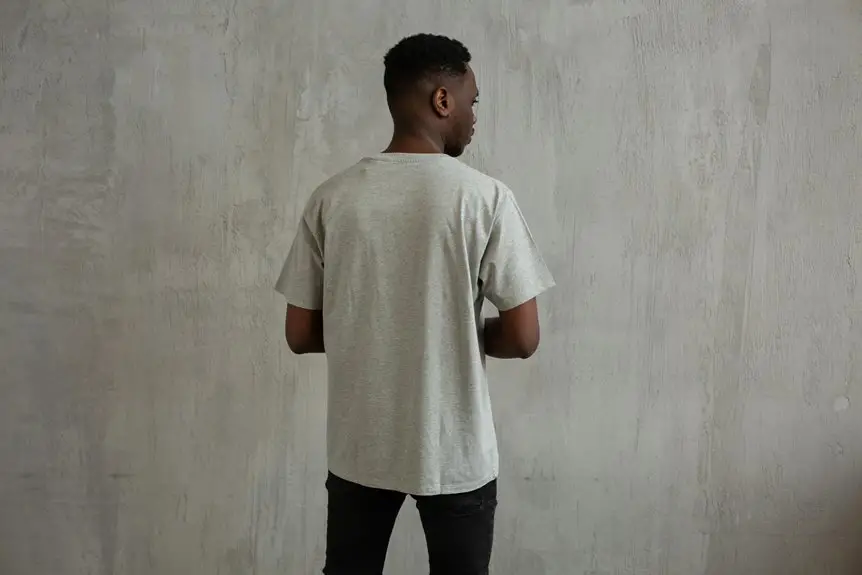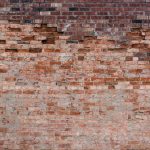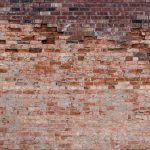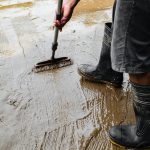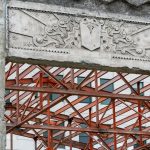To reinforce concrete with fiberglass scrim fabric and prevent cracking, start by choosing an alkali-resistant scrim that fits your project’s shape. Prepare a well-balanced concrete mix with moderate cement and good aggregates to guarantee strong embedding. Clean your surface, apply a bonding agent, then lay the scrim flat with at least 2-inch overlaps, avoiding wrinkles or gaps. Cure the concrete moist for at least seven days to maximize strength. Keep going to discover tips for flawless application and long-term durability.
Table of Contents
Key Takeaways
- Choose alkali-resistant fiberglass scrim with tight weaves for optimal tensile strength and crack resistance in concrete reinforcement.
- Prepare a balanced concrete mix with moderate cement content and well-graded aggregates to enhance fabric bonding and flexibility.
- Clean and prime the concrete surface thoroughly before laying the fiberglass scrim fabric flat with at least 2-inch overlaps to avoid weak points.
- Secure the fabric properly using adhesives or fasteners, ensuring no wrinkles, gaps, or folds for continuous stress distribution.
- Cure the concrete by maintaining moisture consistently for at least 7 days, protecting from extreme conditions to maximize scrim bonding and durability.
Understanding the Benefits of Fiberglass Scrim Fabric in Concrete
Although concrete is known for its strength, it can crack and weaken over time. You’ll find that incorporating fiberglass scrim fabric into your concrete mix greatly boosts its durability.
This fabric acts as a reinforcing mesh, distributing stress evenly and preventing cracks from spreading. When you use fiberglass scrim fabric, you enhance concrete’s resistance to impact, shrinkage, and temperature fluctuations.
Plus, it’s lightweight and won’t corrode like steel reinforcement, meaning less maintenance for you in the long run. The fabric’s flexibility lets it conform to various shapes without compromising strength.
Choosing the Right Fiberglass Scrim Fabric for Your Project
You need to pick the right fiberglass scrim fabric that matches your project’s demands.
Comparing different fabric types helps you find the best balance between strength and durability.
Let’s explore how to choose the fabric that keeps your concrete reinforced and lasting longer.
Fabric Types Comparison
Choosing the right fiberglass scrim fabric can make a significant difference in the strength and durability of your concrete reinforcement project.
Different fabrics offer unique benefits depending on your needs. Here’s a quick comparison to help you decide:
- Woven Fiberglass Scrim: Provides excellent dimensional stability and uniform strength.
- Non-Woven Fiberglass Scrim: Offers better flexibility and conforms well to irregular surfaces.
- Alkali-Resistant Fiberglass: Ideal for concrete environments, resisting degradation over time.
- Coated Fiberglass Scrim: Adds extra protection against moisture and chemical exposure.
Understanding these types helps you select the fabric that best suits your project’s demands, ensuring peak performance and crack prevention.
Strength and Durability
When selecting fiberglass scrim fabric, you’ll want to focus on how well it enhances the strength and durability of your concrete. Choose a scrim with high tensile strength to resist cracking and structural failure over time.
Look for fabrics with tight weaves and consistent fiber distribution, as these provide better reinforcement and reduce weak points. The scrim should also resist chemical degradation and moisture to maintain its integrity in harsh environments.
Don’t overlook flexibility—your fabric needs to accommodate slight movements without tearing. By picking a high-quality fiberglass scrim tailored to your project’s demands, you’ll guarantee your concrete stays strong, durable, and crack-resistant for years.
This careful selection ultimately leads to longer-lasting, safer structures with less maintenance.
Preparing the Concrete Mix for Fiberglass Reinforcement
To get the best results with fiberglass reinforcement, you need to choose concrete ingredients that work well together.
You’ll also want to adjust the mix consistency to guarantee the fabric bonds properly without compromising strength.
Let’s look at how to balance these factors for a durable, reinforced concrete.
Choosing Suitable Concrete Ingredients
Although fiberglass scrim fabric adds strength to concrete, you’ll still need to select ingredients that complement its properties. Choosing the right components guarantees the mix bonds well with the scrim, maximizing crack resistance and durability.
Focus on quality materials that work in harmony with fiberglass reinforcement.
Consider these key factors when selecting your concrete ingredients:
- Use a moderate cement content to balance strength and flexibility.
- Incorporate well-graded aggregates to reduce voids and improve bonding.
- Opt for low-alkali cement to prevent chemical reactions with fiberglass.
- Include supplementary cementitious materials like fly ash or slag to enhance durability and reduce shrinkage.
Adjusting Mix Consistency
Since fiberglass scrim fabric requires proper embedding, you’ll need to adjust your concrete mix consistency carefully. Aim for a mix that’s workable but not too wet—too much water weakens the concrete and reduces adhesion to the fabric.
Start by adding just enough water to achieve a stiff, plastic-like texture that allows the scrim to embed fully without sagging or floating. You want the concrete to flow around the fabric fibers, filling gaps and creating a solid bond.
Avoid overly dry mixes, which make embedding difficult and can cause voids. Test consistency by scooping some mix; it should hold shape without crumbling or dripping.
Adjust water gradually, mixing thoroughly each time, until you reach the ideal balance for strong, crack-resistant reinforcement.
Cutting and Handling Fiberglass Scrim Fabric Safely
When you cut fiberglass scrim fabric, you’ll want to wear protective gloves and a mask to prevent irritation from the tiny fibers.
Use sharp scissors or a utility knife for clean cuts, reducing fraying and airborne particles. Work on a flat, stable surface to keep the fabric steady and avoid accidents.
After cutting, handle the fabric gently to prevent damage or distortion, which could weaken its reinforcing properties.
Keep these tips in mind:
- Cut slowly and precisely to maintain fabric integrity
- Avoid touching your face or eyes during handling
- Store unused fabric in a sealed bag to limit dust
- Dispose of scraps properly to prevent environmental contamination
Following these steps keeps you safe while preserving the scrim’s effectiveness.
Incorporating Fiberglass Scrim Fabric Into Fresh Concrete
After carefully cutting and handling the fiberglass scrim fabric, the next step is to properly incorporate it into fresh concrete.
You’ll want to lay the fabric flat inside the formwork before pouring the concrete. Make sure it’s positioned evenly, without folds or wrinkles, to guarantee consistent reinforcement.
Once in place, pour the fresh concrete gently over the fabric, avoiding displacements. Use a trowel or float to embed the fabric slightly within the concrete’s surface, but don’t press too hard—this keeps the fabric in the ideal position to control cracking.
Applying Fiberglass Scrim Fabric to Existing Concrete Surfaces
When applying fiberglass scrim fabric to existing concrete, start by thoroughly preparing the surface to guarantee proper adhesion.
You’ll want to choose the right adhesive based on the concrete condition and environmental factors.
Finally, use precise application techniques to secure the fabric firmly and evenly.
Surface Preparation Steps
Preparing the concrete surface properly is essential before applying fiberglass scrim fabric to assure strong adhesion and long-lasting reinforcement. You’ll want to verify the surface is clean, dry, and free of any contaminants that might weaken the bond.
Start by removing dirt, oil, grease, and loose particles. Next, smooth out any rough spots or irregularities. Finally, check for moisture levels; the surface should be dry to the touch.
Key surface preparation steps include:
- Thoroughly clean the concrete with a wire brush or pressure washer.
- Repair any cracks or holes with a suitable patching compound.
- Grind down uneven areas to create a flat, uniform surface.
- Allow the concrete to dry completely before moving on.
These steps set the stage for effective fiberglass scrim application.
Adhesive Selection Tips
Choosing the right adhesive plays a crucial role in ensuring your fiberglass scrim fabric bonds securely to existing concrete surfaces.
You want an adhesive that offers strong adhesion, durability, and flexibility to accommodate concrete’s natural expansion and contraction. Epoxy-based adhesives work well for structural strength, while polyurethane adhesives provide excellent elasticity.
Make sure the adhesive is compatible with both the concrete substrate and the fiberglass material to prevent delamination.
Also, consider environmental factors like moisture and temperature—select adhesives rated for outdoor or damp conditions if your surface is exposed.
Always check the manufacturer’s specifications and curing times to match your project’s schedule.
Application Techniques
Start by thoroughly cleaning the concrete surface to guarantee the fiberglass scrim fabric adheres properly. Remove any dirt, grease, or loose particles using a wire brush or pressure washer, then let the surface dry completely.
Next, apply a suitable primer or bonding agent to improve adhesion.
When placing the fiberglass scrim fabric, make certain to:
- Cut the fabric to fit the area with some overlap.
- Lay it flat without wrinkles or bubbles.
- Press firmly to secure full contact with the adhesive.
- Overlap seams by at least 2 inches for added strength.
Finally, cover the fabric with a protective concrete overlay or repair mortar, following manufacturer guidelines for curing times. This technique helps prevent future cracking effectively.
Techniques for Proper Placement and Overlapping of the Fabric
When placing fiberglass scrim fabric in concrete reinforcement, you’ll want to verify each section aligns smoothly and overlaps correctly to maintain structural integrity. Start by laying the fabric flat without wrinkles. Overlap edges by at least 2 inches to guarantee consistent strength. Avoid gaps or folds that can create weak points. Secure the fabric with appropriate fasteners or adhesives before pouring concrete.
| Step | Action | Tip |
|---|---|---|
| 1 | Lay fabric flat | Smooth out wrinkles |
| 2 | Overlap edges | Minimum 2 inches overlap |
| 3 | Avoid gaps/folds | Prevent weak spots |
| 4 | Secure fabric | Use fasteners or adhesives |
| 5 | Check alignment | Verify continuous coverage |
Curing Concrete With Fiberglass Scrim Fabric for Maximum Strength
After guaranteeing the fiberglass scrim fabric is properly placed and secured, focus shifts to curing the concrete to maximize its strength.
Proper curing helps the concrete hydrate fully, bonding with the scrim fabric to prevent cracks and increase durability. You’ll need to keep the concrete moist and at a steady temperature during this critical phase.
To cure concrete effectively with fiberglass scrim fabric, remember to:
- Maintain consistent moisture by misting or covering with wet burlap
- Avoid rapid drying that can weaken the bond
- Protect the surface from extreme temperatures or direct sunlight
- Cure for at least 7 days to achieve peak strength
Following these steps guarantees the fiberglass scrim fabric reinforces your concrete, delivering long-lasting crack resistance.
Common Mistakes to Avoid When Using Fiberglass Scrim Fabric
Although fiberglass scrim fabric offers excellent reinforcement, you can easily undermine its benefits by making avoidable mistakes.
First, don’t skip proper surface preparation; failing to clean and roughen the concrete can prevent the fabric from bonding effectively. Avoid placing the scrim too close to the surface—embed it at the recommended depth to maximize crack resistance.
Also, don’t neglect waterproofing the fabric before application, as moisture can weaken its strength. Make certain you cut the fabric precisely and overlap seams correctly to maintain continuous reinforcement.
Another common error is rushing the curing process; improper curing compromises the fabric’s ability to strengthen the concrete.
Maintenance Tips for Fiberglass-Reinforced Concrete Structures
Proper care guarantees that the benefits of fiberglass scrim fabric in concrete last over time. To keep your fiberglass-reinforced concrete strong and crack-free, you need consistent maintenance.
Consistent maintenance ensures fiberglass scrim fabric reinforces concrete effectively and remains durable over time.
Regularly inspect the surface for any signs of damage or wear. Promptly address small cracks or chips before they worsen. Keep the concrete clean to avoid buildup of harmful substances that can degrade the material. Finally, protect the surface from harsh chemicals and extreme weather conditions whenever possible.
- Inspect for cracks or delamination every 6 months
- Clean with mild detergents, avoiding abrasive tools
- Seal the surface periodically to prevent moisture penetration
- Repair minor damage immediately to maintain integrity
Frequently Asked Questions
Can Fiberglass Scrim Fabric Be Used in Outdoor Concrete Installations?
Yes, you can use fiberglass scrim fabric in outdoor concrete installations. It’s durable and resists moisture, helping prevent cracking and reinforcing the concrete effectively, especially in environments exposed to weather and temperature changes.
How Does Fiberglass Scrim Fabric Compare to Steel Rebar Reinforcement?
Think of fiberglass scrim fabric as a spider’s web—lightweight yet strong—while steel rebar is the sturdy skeleton. You’ll find fiberglass resists corrosion better and is easier to handle, but steel offers superior tensile strength.
Is Fiberglass Scrim Fabric Resistant to Chemical Corrosion?
Yes, fiberglass scrim fabric resists chemical corrosion well. You’ll find it durable against acids, alkalis, and salts, making it ideal for harsh environments where traditional steel reinforcement might corrode and weaken over time.
What Is the Environmental Impact of Using Fiberglass Scrim Fabric?
You’ll find fiberglass scrim fabric has a moderate environmental impact; producing one kilogram emits about 6 kg of CO2. However, its durability reduces repair needs, cutting overall resource use and waste over a structure’s lifespan.
Can Fiberglass Scrim Fabric Reinforcement Reduce Overall Concrete Thickness?
Yes, you can reduce overall concrete thickness by using fiberglass scrim fabric reinforcement. It strengthens the structure, allowing you to use less concrete while maintaining durability and crack resistance, which saves materials and costs effectively.
- Does Chiffon Fabric Stink - July 15, 2025
- Does Chiffon Fabric Affect the Economy - July 15, 2025
- Does Cotton Fabric Have a Nap - July 15, 2025

